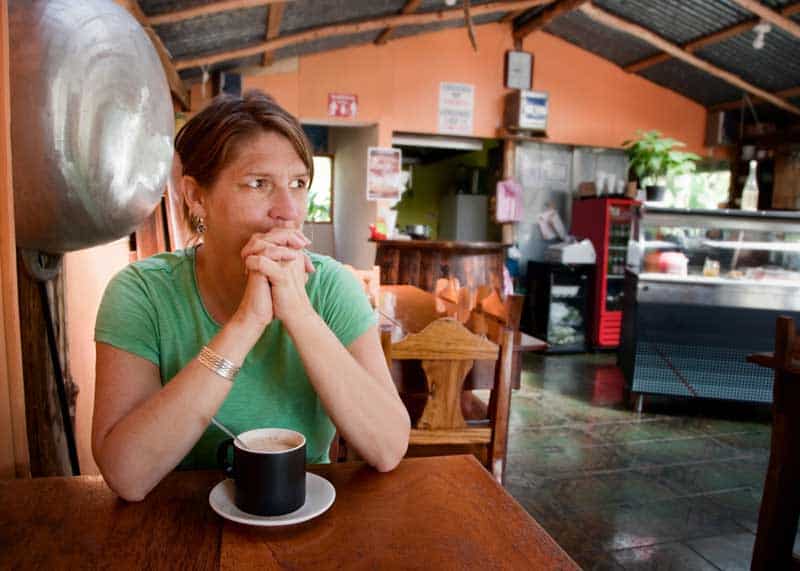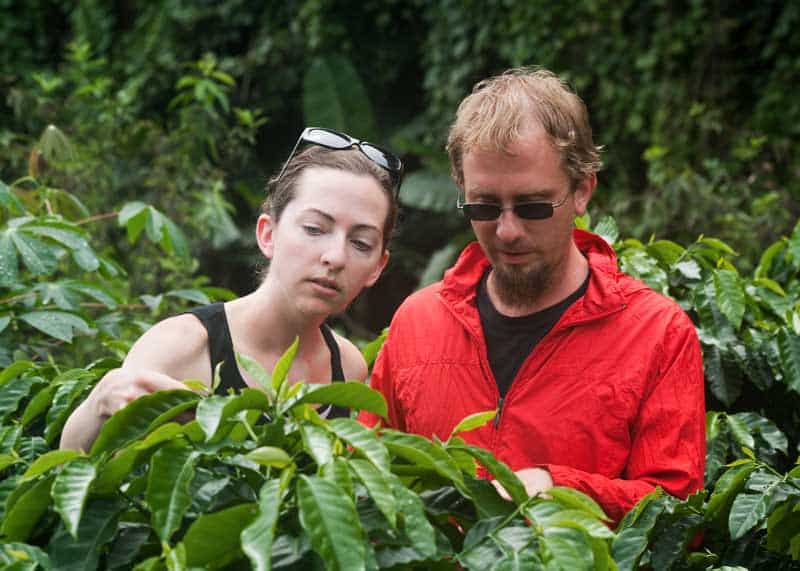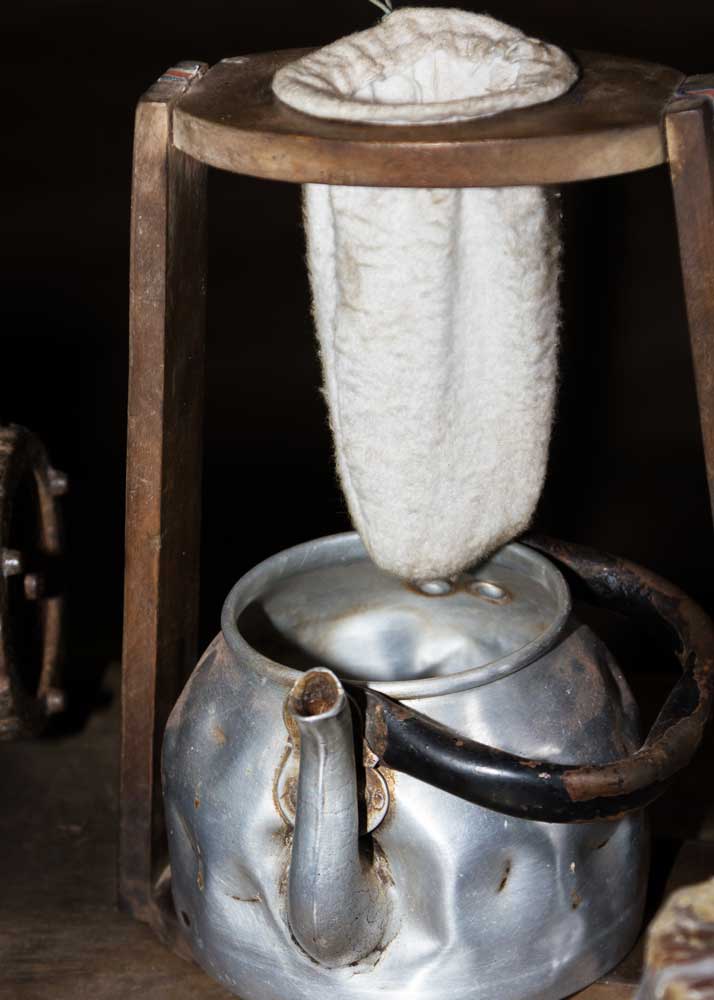Costa Rica is famous for its coffee and it is important to both its culture and economy. In this article, you’ll learn about the delicious world of Costa Rican coffee. Including regions, flavor notes, history, facts, and best Costa Rican coffee brands.

Costa Rican coffee comes from Costa Rica, a country in Central America. It is located south of Nicaragua and is known for its tropical climate. There are eight primary coffee-growing regions. And flavor notes range from chocolate to honey and vanilla.
Beginning with the most important facts from its rich and long history, we’ll dive into each of the country’s coffee-making regions, exploring what they have to offer and what makes them so unique.
Plus some of the most popular Costa-Rican coffee brands and some facts about the great Costa Rican coffee.
Even among its neighbors in Central America – the region most commonly associated with coffee production and consumption – Costa Rica has always stood out.
For over 240 years, Costa Rica has been a major player in not only the production of coffee, but also its continuous transformation into an accessible, tasteful, and multi-faceted experience for millions. If you’re interested in all things Costa Rican coffee, keep reading.
Table of Contents
History of Costa Rican Coffee
Coffee first arrived in Costa-Rica was in 1779 as it had been brought over by the Spanish to the Americas.
Arabica beans that are now synonymous with Costa Rica are the world’s oldest and originate in Africa; most sources agree on Ethiopia in particular.
The country was the first in its region to turn coffee harvesting into a crucial part of its economy. In fact, it had become so successful that soon its share in the economy and revenue it generated would overtake even those of tobacco and cacao.
Around the same time, in the early 1820s, Central America had managed to free itself from the might of the Portuguese and the Spanish, so the demand for a fresh product that would keep the economy circulating independently was substantial.
From that point, Costa Rica went on to become a crucial exporter of coffee not only to its neighbors but to the rest of the world as well, owing much of its success to its excellent climactic and geographical conditions.
In the 1990s, the Costa Rican government decided to expand beyond the Central Valley. This was to manage plummeting prices and further improve the quality of the coffee.
Today, Costa Rica remains a popular coffee-producing country.

8 Coffee Growing Regions of Costa Rican: Flavor Notes
In Costa Rica, there are eight different regions that are known for their unique flavors.
Temperature ranges from 64 to 79°F (18 to 26°C). Geographically, only a couple of them isn’t close to the capital city of San Jose. But all are closely connected: you could draw only a slightly bent line from one end of Costa Rica to the other touching on all of the regions at once.
Central Valley
The region where the Costa-Rican coffee industry took its first steps. Expectedly located near the capital city of San Jose, it is blessed not only with its large size and high working population, but also a wide range of altitudes available and rich climate.
These provide for classic, rugged Arabica beans to vary in taste and characteristics.
Western Valley
This region offers even more variety in flavors, which is partly due to the beans being grown in a healthy climate without dry changes, as well as soil that is close to native volcanos and mountains.
Flavors from the Western Valley range from chocolate to vanilla and honey.
Tarrazú
Proximity to mountains and deep, thriving forests helps to cultivate yet another source of excellent Arabica coffee that also varies in flavors (chocolate, fruits, vanilla).
These beans are distinct in color, with a somewhat blue-like appearance. Also, its coffee is higher in caffeine, compared to the others.
Turrialba
As the case with the previous three regions, the coffee Turrialba provides has a slightly acidic yet soft quality to it, but the region’s primary purpose was originally outlined with the introduction of the Atlantic railroad in 1890s.
This region remains connected with the new economic opportunities its railroad once offered to Costa Rican coffee industry.
Brunca
Another region that specializes in a variety of high-quality flavors that range from vanilla to citrus, in large part due to its welcoming but ever-changing climate, as well as different altitudes.
Tres Ríos
The second region is located near the Costa-Rican capital, but is much smaller, and is often seen as an extension of the original Central Valley.
As the rest of the country’s coffee regions, it is blessed with excellent climactic conditions and soil that is enriched by nearby volcanoes and mountains.
Orosi
Known for its rich soil and beautiful landscapes that are filled with forests and mountains, this region is responsible for producing strong-flavored coffee with notes of cocoa in the flavor.
Guanacaste
This region is characterized by its dry and hot climate, although it does steadily experience well-defined rainy periods too.
Given this climate, as well as the volcanic soils the region has built its plantations on, the taste is defined not only by characteristic Costa Rican coffee acidic notes but also by a certain bitterness to it.
It is regions like this that create a unique terroir coffee.
At a loss for what words to use to describe your coffee flavor? This guide will help: 241 Flavorful Words to Describe Coffee
Growing and Making Costa Rican Coffee
While coffee is typically grown the same way around the world, many regions have unique customs and methods. Here’s how coffee is grown and made in Costa Rica.
How Coffee is Grown in Costa Rica
Here’s a glimpse into how coffee is produced in Costa Rica. Take a tour with the Vargas family at the Doka Coffee Estates. They have been producing coffee since 1940.
How to Make Coffee in Costa Rica
In Costa Rica, coffee is made with a chorreador de cafe. This device consists of a cotton coffee bag (bolsa de chorrear café) on a wooden stand.
What does chorrear mean? Chorrear is a Spanish verb meaning: “to drip” or “to gush”. Learn more about ordering coffee in Spanish.
Here’s how the coffee maker works: Hot water is poured through the cotton coffee sock (which has been filled with coffee grounds). The bag is suspended above a large mug allowing the brewed (drip) coffee to filter into it.
Here’s an antique chorreador found in a Costa Rican museum. To see a modern one, check out the video below the photo.

Here’s a glimpse of how the process looks.
Here’s how to make coffee sock coffee at home – either hot or cold brew.
Costa Rican Coffee Brands
The following coffee brands are some of the most popular Costa-Rican coffee exports, all of which are based on classic Arabica beans. Links in this section go to Amazon.
Costa Rican Tarrazú: Medium Roast, Medium Dark coffee, with a varied taste that includes cocoa, honey, and fruits.
- Café 1820: Light Roast, flavors are varied but a slight spark of bitterness is a persistent feat.
- Café Britt, Classic Dark Roast: Dark Roast, taste offers a pleasant mix of chocolate, fruits, and fig.
- Café Britt, Tres Rios Valdivia: Medium Roast, a rich and varied taste with notes of citrus, fruits, and nuts being most prevalent.
- Café Britt, Tarrazú Montecielo: Medium Roast, Medium Dark, Gluten-Free coffee with a taste that includes notes of chocolate and grapefruit.
- Volcanica Peaberry: Medium Roast, with a taste that focuses on delivering the perfect blend of citrus and fruit.
- Monteverde: Light Roast, highly varied taste with a noted prevalence in fruits and cedar.
- La Minita by The Coffee Bean and Tea Leaf: Medium Roast, a rich, slightly acidic chocolate and caramel taste with a notable smoothness to it.
5 Costa Rica Facts
- It is illegal to grow any other type of coffee bean other than Arabica. This is true even though other beans, such as Robusta, are easier and cheaper to grow.
- The harvest of coffee in Costa Rica begins and ends in different seasons, depending on the region. However, most begin during spring and end either in February or March, with the exceptions of Guanacaste and Turrialba, where it begins in July.
- Costa Rica is the 15th largest coffee exporter in the world.
- Costa Rica produces less than 1% of the world’s coffee supply.
- Prior to the two World Wars, the first and most important Costa-Rican partner in coffee export in Europe was England.

Your Turn
Have you tried Costa Rican coffee? Which region do you plan to try next? Have a detail to add? Or maybe a question? Join me below.
- About the Author
- Latest Posts
Bryan Haines is a co-founder and writer on EnjoyJava – and is working to make it the best coffee blog in the world.
He is a travel blogger at Storyteller Travel and blogs about photography at Storyteller Tech. He is also co-founder of Storyteller Media, a company he started with his wife, Dena.

